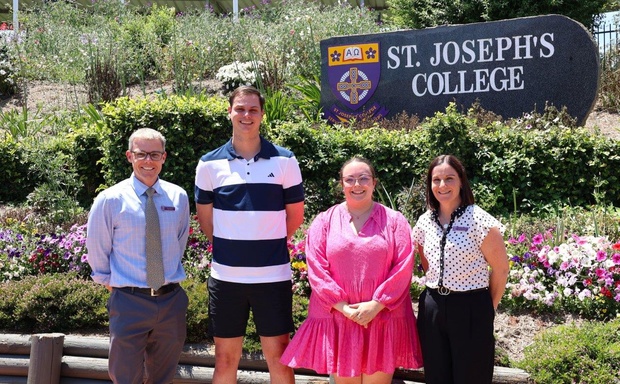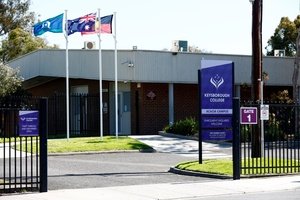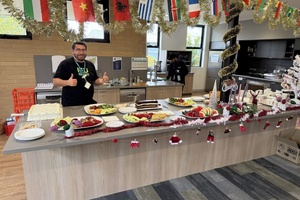Acknowledging as much, earlier this month AITSL released new national guidelines that seek to improve the practicum experience for preservice teachers, while also recognising the input and efforts of mentor teachers.
While upgrading and improving students’ prac experience is a broader work in progress for schools and universities, one secondary college in Toowoomba is seizing the initiative and providing mentoring with a difference for final-year ITE students.
Less a practicum placement and more an internship, the 10-week Pathway2Teach program at St Joseph’s College aims to nurture and encourage a more vocational approach to the profession.
“We’re in the midst of a teacher crisis and the appreciation of the profession is different to what it used to be,” program coordinator and deputy principal Brendon Willocks tells EducationHQ.
“…and we also noticed a bit of a gap in what our preservice teachers and early career teachers were telling us they were experiencing at university, and what we were able to provide them with in their first year here.”
Pathway2Teach, he explains, is an opportunity to bridge that gap a little and to develop a repertoire of practice for those beginning teachers, while leveraging St Joseph’s College’s excellent professional learning community.
More than two years in the making, it has taken time and some coordination to come to fruition, but the patience and commitment have been worth the wait.
The program very purposely rolls out one day a week over the 10 weeks, in order to strike a balance for university students with part-time jobs and other commitments.
Maree Comerford is program leader for staff development at St Joseph’s and says the idea is to give students the opportunity to see all it has to offer.
In her second year at the school, Comerford leads the professional learning framework and structures facet of the Pathways2Teach program.
“So it’s not like a practicum place experience where you just follow that one teacher,” she says.
“…it’s everything from our restorative practices to our professional learning community. Just take everything that we can give you that might not have been available to you in your practicum placements because you’re so focused on that assignment and those outcomes.”
And this has been key to the program’s success, according to Willocks.
“…that was the feedback that we received from participants so far, that they did like the idea of not feeling assessed, so to speak, for their university studies, which meant that they felt freer to take risks and try new things because … they’re in the stage of building their teacher identity and we’re all on that journey all of the time,” he says.
“They’re wanting to see these different experiences – different teachers, how they manage classrooms, work with students to build their teacher identity and repertoire of practice – and so that was one of our aims that worked quite well.”
The program, Willock reiterates, is really trying to tap into that concept of vocation, “because we really understand that not everybody has that", he says.

ITE students Andrew Day, above left, and Kirsty Stocker both agree the Pathway2Teach program has left them feeling far better prepared for their teaching career.
“Some people go to work for the paycheck and that’s important for all of us, however, some people also do it because they believe in that vocation concept and they’re the sorts of people we’re after.”
Andrew Day from QUT and Kirsty Stocker from UniSQ, have just completed the program.
Day says Pathway2Teach has significantly boosted his confidence.
“The supportive environment has allowed me to explore classroom practices with greater autonomy than in my previous placements,” he shares.
“My mentor’s constructive feedback has been instrumental in my growth, ensuring I feel well-prepared for my teaching journey.”
Stocker agrees, and says the program’s role in bridging the gap between her studies and her future career has been a welcome boost.
“Throughout this experience, I’ve had the chance to learn classroom teaching practices in a supportive environment,” she says.
“St Joseph’s College has made me feel truly connected to their school, the students and the broader community.
“Overall, the program has drastically changed my perspective on teaching, leaving me better prepared to enter the workforce with confidence.”
By joining the college community, Willocks emphasises, preservice teachers get to experience the three pillars of its Staff Development and Engagement Plan: you belong here, you are valued here, and you can succeed here.
“These guiding principles foster an environment and culture where all staff can grow, develop and thrive into exceptional educators,” he says.
A co-educational, Years 7-12 school of 950 students, St Joseph’s, like every school, is always on the lookout for excellent teachers, and while the program could in theory assist with recruitment if the timing works and there is a specific role available, the aim of the program is far more to provide a benefit for the whole system.
“So [it’s also about] leveraging our culture and our professional learning community to give back to the system,” Willock says.
“And to pay it forward a little bit, too.
“...if you’ve got a really great strategy, a great way of being, a great way of collegiality from your time in the St Joseph’s College professional learning community, well, pay that forward at whatever school you are at as well.”
Comerford says another major positive of the program is the feel-good factor for mentors.
“…[The ITE students] are assigned a mentor teacher, and the sustenance that it provided the mentors, like there was genuine joy in the mentors’ feedback for helping someone who has a vocation,” she says, proudly.
“You know that enthusiasm that someone who used to be yourself 20 years ago can give you? So feeding off their enthusiasm and being really invested in the growth of the pathway to teach teachers.
“…speaking to them now that it’s concluded, some of the mentors are like, ‘OK, who’s next?’ And that in itself is the greatest feedback of like, ‘how do we make this work next year?’ ‘What are the next steps?’ They’re invested.”
For anyone interested in learning more about the Pathway2Teach program, Willocks and Comerford will be presenting at the National Education Summit in Brisbane in July 2025.














